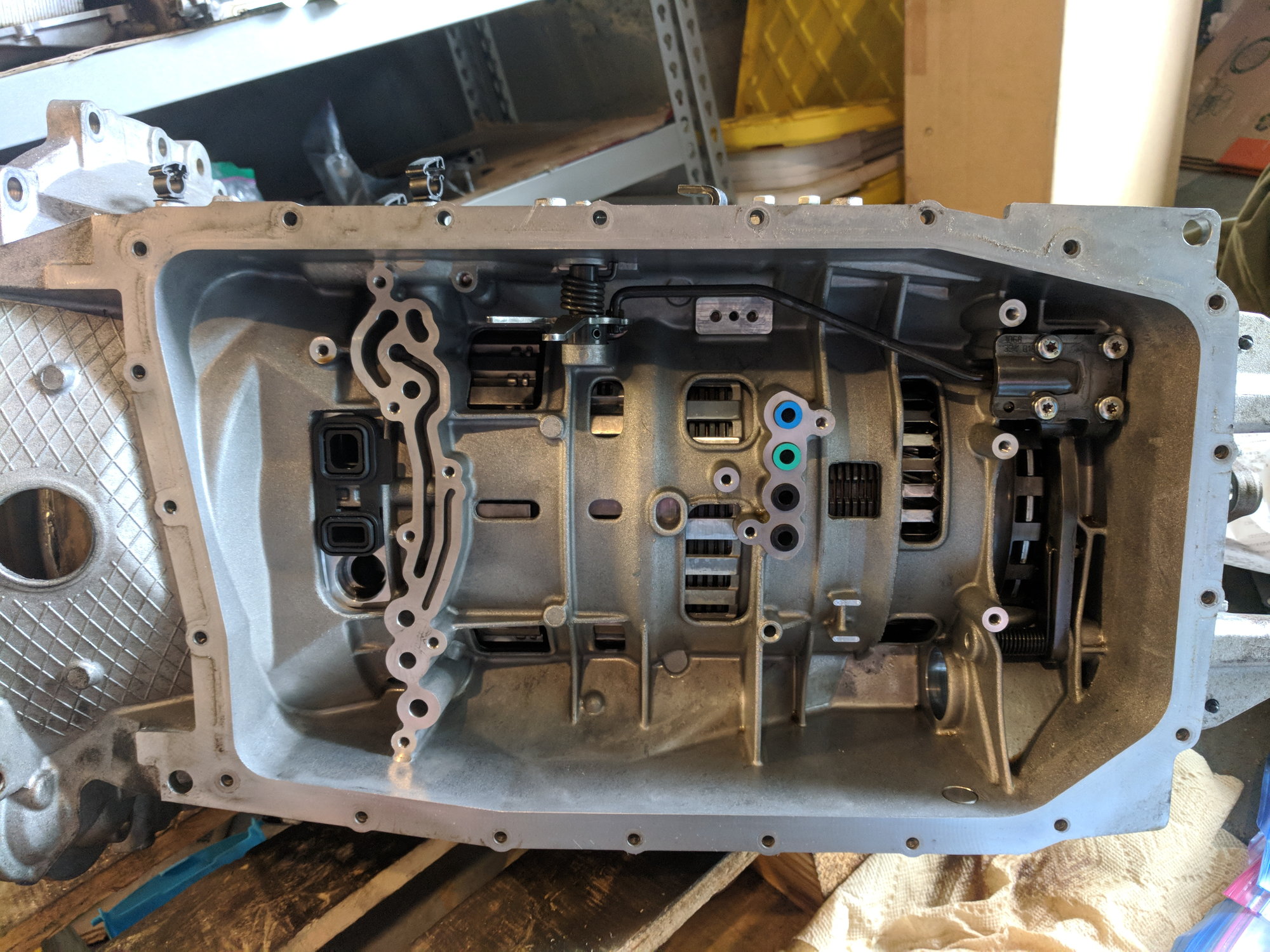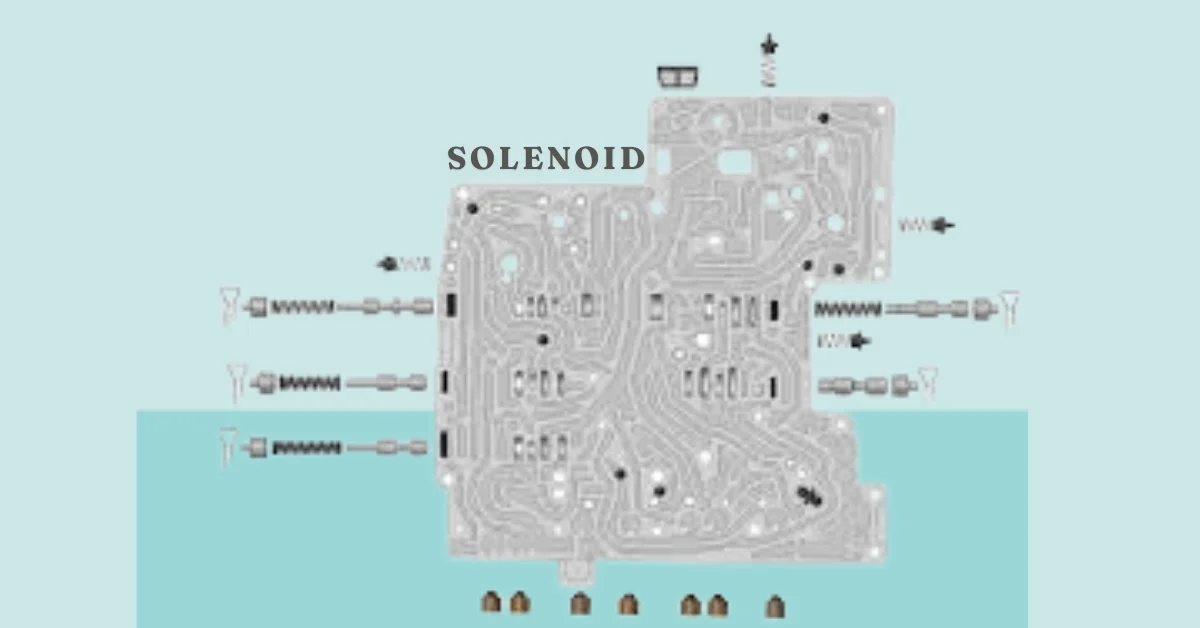The ZF 6HP Generation 2 transmission, particularly in its advanced versions, is a well-regarded automatic gearbox commonly used in numerous high-performance vehicles. Its ability to provide smooth shifting and efficient operation relies significantly on a series of solenoids located within the valve body. These solenoids serve as electronically controlled valves, managing fluid pressure to engage specific clutches and facilitate desired gear changes. For technicians working with the ZF 6HP Generation 2 transmission, understanding the solenoid diagram is essential for accurate diagnostics and repairs.

In-Depth Look at the ZF 6HP Generation 2 Solenoid Diagram
This comprehensive guide explores the complexities of the ZF 6HP Generation 2 Solenoid Diagram, providing you with the knowledge to:
- Identify the various solenoids and their specific functions.
- Understand the flow of hydraulic pressure within the valve body.
- Troubleshoot potential issues linked to solenoid failures.
By the end of this article, you will possess a solid foundation for navigating the intricacies of the ZF 6HP Generation 2 Solenoid Diagram transmission.
Recognizing the Components of the ZF 6HP Generation 2 Solenoid Diagram
The first step is to familiarize yourself with the individual solenoids included in the ZF 6HP Generation 2 Solenoid Diagram. Below is an overview of the common solenoids you may encounter:
Pressure Control Solenoids (EDS)
These solenoids regulate the overall line pressure within the transmission. Generally, multiple EDS solenoids exist, each labeled with a number (e.g., EDS 1, EDS 2) responsible for a specific pressure area.
Shift Solenoids (SL)
These solenoids manage the application of specific clutches by directing hydraulic pressure. Examples include the SL1 solenoid for the A/C clutch and the SL2 solenoid for the B clutch.
Torque Converter Lockup (TCC) Solenoid
This solenoid is responsible for controlling the engagement of the torque converter clutch, which enhances fuel efficiency during cruising speeds.
Manual Valve (MV)
Sometimes referred to as the EPC (Electronic Pressure Control) solenoid, this component regulates the overall pressure directed to the shift solenoids, thereby influencing shift characteristics.
It is crucial to note that the arrangement and naming of solenoids may vary slightly based on the vehicle’s application. Always refer to the specific ZF 6HP Generation 2 Solenoid Diagram service manual for the most accurate information.
Deciphering the Solenoid Diagram
A solenoid diagram acts as a schematic representation of the valve body, illustrating the location and functionality of each solenoid. Here’s how to interpret the key components of the ZF 6HP Generation 2 Solenoid Diagram:
Solenoid Symbols
Each solenoid is represented by a distinctive symbol, typically a rectangle with internal markings indicating its function (pressure control, shift, etc.).
Fluid Pathways
Lines within the diagram illustrate the routes of hydraulic fluid throughout the valve body. These lines connect solenoids, control valves, and clutch cylinders.
Directional Arrows
Arrows on the lines indicate the flow direction of hydraulic fluid when a specific solenoid is activated.
Pressure Levels
Some diagrams may utilize color coding or labels to signify different pressure levels within the system.
Understanding these elements enables you to trace the path of hydraulic pressure modulated by the solenoids. For instance, during a specific gear change scenario, by following the activation of a certain shift solenoid and the corresponding fluid path through the valve body, you can visualize how the clutch engages and the gear change occurs.
Typical Solenoid-Related Issues in ZF 6HP Generation 2 Transmissions
Solenoids are electronic components that can degrade over time. Here are some common problems associated with malfunctioning solenoids:
Shifting Problems
Erratic gear changes, delayed engagement, or slipping between gears may indicate a faulty shift solenoid.
Line Pressure Issues
A failing pressure control solenoid can lead to either insufficient or excessive line pressure, resulting in harsh shifts or a lack of power transfer.
Torque Converter Shudder
A malfunctioning TCC solenoid may induce vibrations during torque converter lockup.
Procedures for Replacing and Repairing ZF 6HP Generation 2 Solenoids
While basic troubleshooting can be conducted, the replacement or repair of solenoids within the ZF 6HP Generation 2 Solenoid Diagram valve body is best entrusted to experienced technicians. Below is an outline of the process:
Disassembly of the Valve Body
The transmission must be removed from the vehicle, and the valve body disassembled carefully, adhering to the service manual. This includes the removal of various valves, springs, and seals.
Solenoid Replacement
Faulty solenoids should be identified and replaced with new OEM or high-quality aftermarket components. Proper cleaning and lubrication of surrounding parts during this step is essential.
Reassembly of the Valve Body
The valve body must be meticulously reassembled, ensuring all components are placed correctly and torqued to specification. Special care should be given to valve clearances and proper alignment.
Reinstallation and Calibration of the Transmission
Once the valve body is reinstated within the transmission, the entire assembly is mounted back onto the vehicle. In certain cases, the transmission control module (TCM) may need reprogramming or calibration to accommodate the new solenoids.
Significance of Using Quality Components and Adhering to Procedures
Using high-quality replacement solenoids is vital. Inferior parts can lead to premature failure and additional transmission complications. Furthermore, following the service manual’s disassembly and reassembly guidelines is crucial to ensuring proper functionality and preventing leaks or malfunctions.
Additional Resources for ZF 6HP Generation 2 Solenoid Information
For a more comprehensive understanding of the ZF 6HP Generation 2 Solenoid Diagram and valve body operations, consider the following resources:
ZF Technical Documentation
ZF provides technical documentation and repair manuals for their transmissions. Some of this information may require a paid subscription, but it can serve as a valuable resource for professional technicians.
Transmission Parts Suppliers
Reputable transmission parts suppliers often offer detailed catalogs containing information about specific solenoids compatible with the ZF 6HP Generation 2 Solenoid Diagram. These catalogs may also include technical specifications and solenoid replacement procedures.
Online Repair Forums
Online forums frequented by experienced transmission builders and technicians can provide invaluable insights and troubleshooting tips regarding ZF 6HP Generation 2 transmissions.
Conclusion
By understanding the ZF 6HP Generation 2 solenoid diagram, you gain crucial insight into the internal mechanics of this advanced transmission. This knowledge empowers you to diagnose potential solenoid-related problems and perform essential troubleshooting steps. For complex repairs involving the disassembly and reassembly of the valve body, it is highly advisable to consult a qualified transmission specialist.

Frequently Asked Questions (FAQs)
Here are ten FAQs related to the ZF 6HP Generation 2 Solenoid Diagram:
- What is the ZF 6HP Generation 2 transmission?
- The ZF 6HP Generation 2 transmission is an automatic gearbox utilized in various high-performance vehicles, recognized for its smooth shifting and efficiency.
- What function do solenoids serve in the ZF 6HP Generation 2 transmission?
- In this transmission, solenoids act as electronically controlled valves that manage hydraulic fluid pressure to engage clutches and facilitate gear changes.
- How many solenoids are typically present in the ZF 6HP Generation 2?
- The transmission usually includes several solenoids, such as pressure control solenoids (EDS), shift solenoids (SL), torque converter lockup solenoids (TCC), and manual valves (MV).
- What are the indicators of a failing shift solenoid?
- Common symptoms consist of erratic gear changes, delayed engagement, and slipping between gears, all of which may suggest a malfunctioning shift solenoid.
- How can I identify solenoid-related issues in my transmission?
- Diagnosing solenoid-related problems involves checking for transmission error codes, observing shifting behavior, and conducting pressure tests.
- Is it safe to replace solenoids on my own?
- While basic troubleshooting can be undertaken by a knowledgeable technician, replacing solenoids necessitates disassembling the transmission and is best performed by experienced mechanics.
- What tools are necessary for replacing solenoids in the ZF 6HP Generation 2 transmission?
- Tools typically required include a socket set, torque wrench, screwdrivers, and a service manual for guidance during disassembly and reassembly.
- How frequently should solenoids be replaced?
- There is no specific replacement schedule for solenoids, but they should be inspected regularly, particularly if shifting issues or fluid leaks are observed.
- Can using subpar solenoids impact my transmission?
- Yes, using low-quality or incompatible solenoids can lead to premature failures and additional transmission issues, affecting both performance and reliability.
- Where can I find more information about the ZF 6HP Generation 2 Solenoid Diagram?
- Further information is accessible through ZF’s technical documentation, reputable transmission parts suppliers, and online forums dedicated to transmission repair and maintenance.


